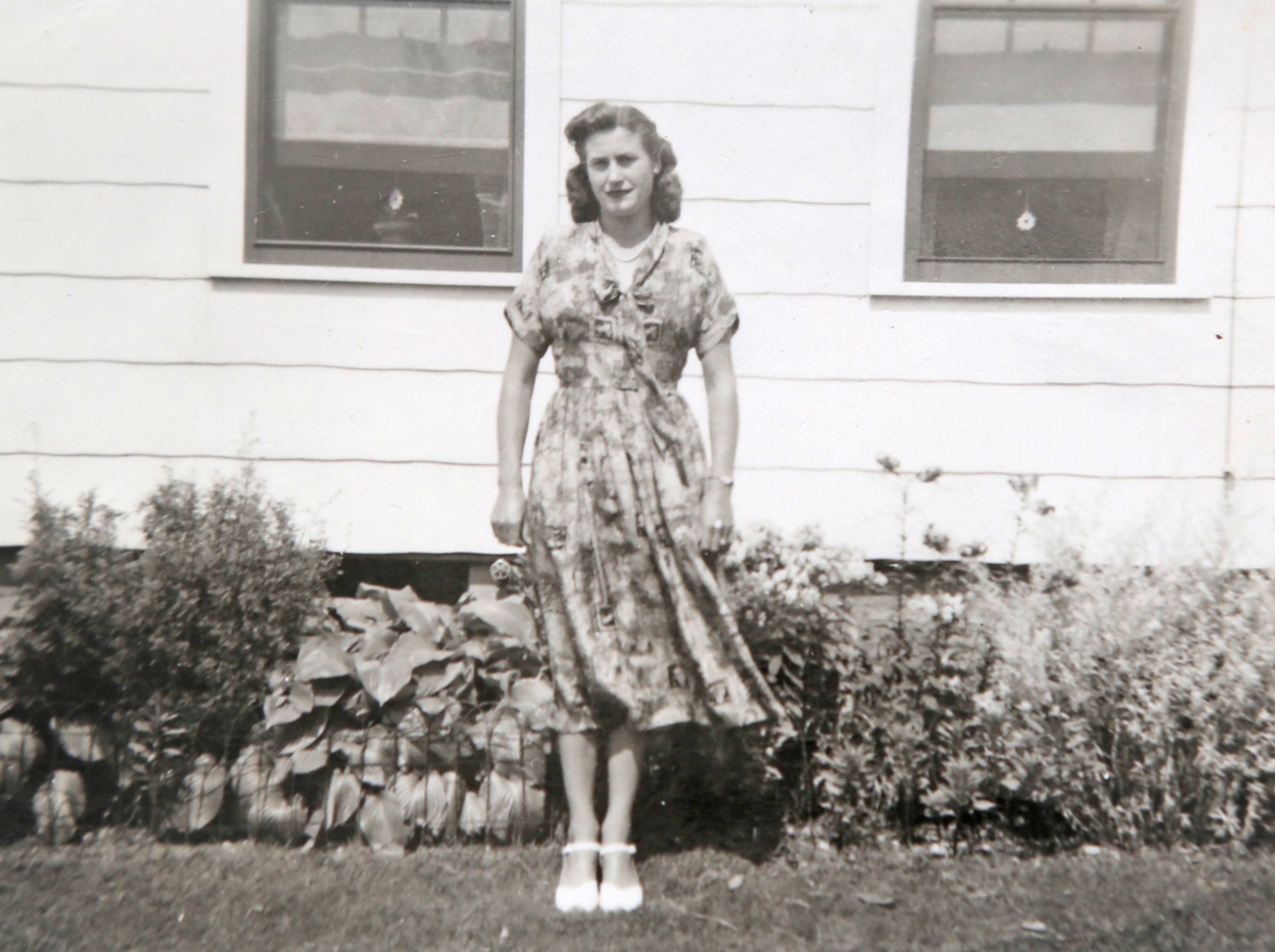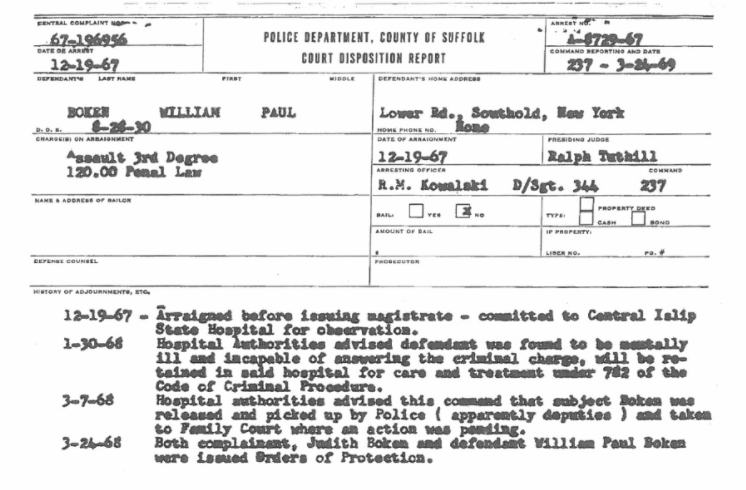Twenty years ago, while working on a book about the last farmers of the North Fork of Long Island, Steve Wick heard the story of a woman who went missing.
“I don’t know that I paid that much attention to it at the time,” Wick said. “But I certainly never forgot it.”
Last year, at the end of June, Wick left Newsday to become executive editor of The Suffolk Times, Riverhead News-Review and Shelter Island Reporter. On his first day on the job leading the weeklies, he started interviewing police officers about that missing woman.
She had a name – Louise Pietrewicz. And a daughter who was still alive. She had been married to a prominent farmer and was known to have had an affair with a local police officer.
In October 1966, she disappeared. In October 2017, The Suffolk Times brought her back with a 10,000-word series and documentary. Late last month, police found a woman’s remains. Last week, DNA tests confirmed it was her.
Fifty-one years ago, a missing woman made no headlines or police blotters. The disappearance of Louise Pietrewicz was something many people in town knew about, but in every way that matters, she’d been thrown away, Wick said. Her story was a footnote.
“It’s not a footnote here anymore.”

How they reported the story
To report a 51-year-old story, Wick and content director Grant Parpan knocked on doors, searched through bound volumes of documents at the courthouse and dug into property and employment records.
They pieced together what happened before and after Pietrewicz disappeared, and found both her husband and the police officer she’d been seeing were physically abusive to her. They were also powerful men being protected by other powerful men.
From the story:
Interviews with people who knew and worked with these officials at that time paint a damning portrait of men who behaved like entitled members of a small-town good old boys’ club, holding down elected and patronage jobs and controlling access to dozens of others. They mattered. Their club mattered. Keeping the club and its privileged membership going mattered. Unraveling the story of what happened to Louise Pietrewicz did not.
Wick and Parpan worked with Krysten Massa, a multimedia reporter who created the documentary. The three each had varying theories about what happened to Pietrewicz. Her abusive husband, the farmer, later remarried. But what about the police officer?
Wick and Parpan found a strange series of events after Pietrewicz went missing. Two state police investigators who suspected him of killing her met a wall when a local judge declared the officer mentally ill. He later disappeared until he turned up dead in Queens in 1982.
When The Suffolk Times’ series, “Gone,” was first published last October, they screened the documentary to a packed audience. That documentary begins not in the past, but in the present, in the newsroom.
"We wanted people to understand why we did this story and why it was important for us to tell this story," Massa said.
Many people around town knew pieces of the story, she said, and "we wanted to show them ‘yes, this is the story you all know a bit of, but what actually happened?’"

People don’t just disappear here
In March, the ex-wife of that police officer at last led police to Louise Pietrewicz’s body.
Following renewed interest in the case last fall, investigators re-interviewed Judith Terry, who was married to Mr. Boken back in 1966, when Louise disappeared. At least twice over the last five decades, she had told police that her husband had threatened her life. “Keep it up and you will end up in the basement with the other bitch,” he told her.
This time, however, Ms. Terry revealed more: She had seen him burying a body wrapped in burlap in their basement.
Both women, the Times pointed out, suffered from domestic violence by the same man. It’s a story that wasn’t told 51 years ago, but one that Wick thinks is important to tell now.
“People don’t just disappear here,” he said. “This isn’t a country where people get bumped off and dumped in the woods.”
But it has been a country where the voices of white men mattered the most, said Jerry Mitchell, an investigative reporter at The (Jackson, Mississippi) Clarion-Ledger. Mitchell, who’s covered major cold cases from the Civil Rights era, also wrote a series called “Gone” in 2016. Mitchell’s reporting in that series led to the arrest and conviction of a serial killer.
Like with New York’s “Gone,” Mississippi’s “Gone” was about the murder of women more than 50 years ago.
The Suffolk Times hadn’t heard of his series, but Mitchell read theirs. Could this be the start of a new reporting genre?
“Every Civil Rights cold case that was reopened, a reporter wrote about it,” he said. “Maybe the #Metoo era will lead to more cold cases like we’re talking about in ‘Gone.”
Local reporters are able to crack these cold cases that authorities don’t or won’t touch, Mitchell said.
“And why are they able to? I believe it's because reporters look beyond the typical details that busy law enforcement overlook. Reporters want to know the weather that night, the smells, all the details, and it may be those details are key.”

Not the end
Wick, Parpan and Massa had to make time to report and tell the story of “Gone” while doing daily community journalism.
Parpan gets calls the night of school board budget votes. He knows people count on them to cover those things. But to Wick, the series and the result has shown him that they have to be more than that, too.
“We have to be an archive of a community, and we have to tell people what’s going on here.”
They learned a few other things in the process, too: Having a young journalist such as Massa with different talents helped them tell the story in different ways. Also, people still want to read good stories.
The series has had more than 20,000 page views, Parpan said, and the story about the remains had more than 30,000. (“Some perspective: We’ve only had one other story on our news sites crack 15,000 page views in the past month. It was a short breaking news piece on a wedding party vs. fire department brawl at a local catering hall.”)
Their site doesn’t have a paywall. Home delivery subscribers have gone down by about 100, to 3,700, since the series originally ran.
Wick sees that as part of an ongoing trend, and one he saw at Newsday. But the community reaction to "Gone" has been incredible, he said, and supports the idea of serious, long-form journalism.
"Whether those stories have a tangible business impact is secondary to the point of doing them in the first place," he said. "Having said that, once a community newspaper stakes out serious ground with stories like 'Gone,' the community will respond positively as we are offering a far better product. With that, the sales team has something really good to sell."
Last year when the series originally ran, Wick and Parpan ended it with a section titled “Closure.”
Now, all three journalists are now working on the fourth chapter of the story.
“Maybe we have to call part four ‘true closure,'" Parpan said.
Fifty-one years ago, at 38 years old, Louise Pietrewicz was murdered by a town cop.
Back then, Wick said, no one cared.
“We cared,” he said. “And just us caring brought an amazing result around. That, if you’re a community newspaper – Wow. That’s a home run.”







